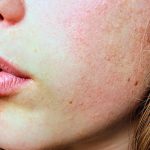Shingles is on the rise in the United States. A condition that once affected people over age 50, it is now becoming more common in younger patients. Our board-certified dermatologists explain what causes shingles as well as how to diagnose and treat it.
What is shingles?
Shingles, also known as herpes zoster, is a medical condition that usually presents with a painful skin rash. Severe nerve pain called postherpetic neuralgia (PHN) is a common complication of shingles. Some people with shingles may experience PHN for months or even years after the rash is gone.
Shingles can also lead to serious complications involving the eyes, including vision loss. In rare cases, patients can develop lung infections, hearing problems and brain inflammation.
An estimated 1 in 3 people in the U.S. will develop shingles in their lifetime, according to the Centers for Disease Control. It is most common in people over the age of 50. As the immune system weakens with age, older adults have an increased risk of developing shingles. However, the condition is becoming more prevalent among younger people.
Most people who get shingles only have it one time, but it is possible to get it more than once.
What causes shingles?
Shingles is caused by varicella-zoster virus (VZV), the same virus that causes chickenpox. If you were born prior to 1990 before the chickenpox vaccine was available, chances are you had the itchy, blistering rash. Once you have had it, the virus stays in your body and can reactivate later in life, causing shingles.
Therefore, if you had chickenpox as a child or teen, you are at risk of developing shingles as an adult. People with weakened immune systems have the highest risk. Mental or emotional stress can also trigger the shingles virus.
The condition is highly contagious. Individuals who never had chickenpox or the chickenpox vaccine can still get infected with VZV from someone who has shingles, according to the CDC.
How do you know if you have shingles?
The symptoms of shingles often present right away. Pain or itching of the skin is the first sign, sometimes even before a rash appears.
The shingles rash often occurs in a single stripe on one side of the body. It can also occur on the face. In rare cases, the rash can resemble chickenpox, with small, fluid-filled blisters all over the body.
Other symptoms of shingles may include headaches, chills and an upset stomach.
Diagnosing and treating shingles
Dermatologists often do a visual exam and inquire about symptoms to diagnose shingles. Your doctor may also take a sample of the fluid from a blister to examine in a lab.
Once a diagnosis is made, treatment for shingles usually involves taking an antiviral medication to reduce the rash. According to the American Academy of Dermatology Association, acyclovir, famciclovir or valacyclovir are the most commonly prescribed antivirals.
Your dermatologist may also recommend an over-the-counter pain medication, such as ibuprofen or acetaminophen, to address any acute pain.
How to prevent shingles
Now that you know what causes shingles, consider your risk factors. Fortunately, there are ways to lower your risk of developing the condition. The CDC recommends two doses of the shingles vaccine (recombinant zoster vaccine) for adults 50 and older. The brand names are RZV and Shingrix.
Adults 19 years and older who have weak immune systems should also consider getting the Shingrix vaccine. Discuss your medical history with your primary care physician to make an informed decision.
And what about the chickenpox vaccine?
While cases of chickenpox have become rarer since that vaccine was introduced in 1995, it is still an effective method of prevention. The CDC advises those who have never had chickenpox to get the chickenpox vaccine. This includes children, adolescents and adults.
Studies show that children who receive the chickenpox vaccine have a 78% lower rate of getting shingles compared to unvaccinated children.
Don’t wait to see your dermatologist
If you have a rash that may be shingles, contact us right away to make an appointment. Early detection leads to rapid treatment, which can reduce to potential for long-term complications. It also reduces the chance of spreading the virus.






